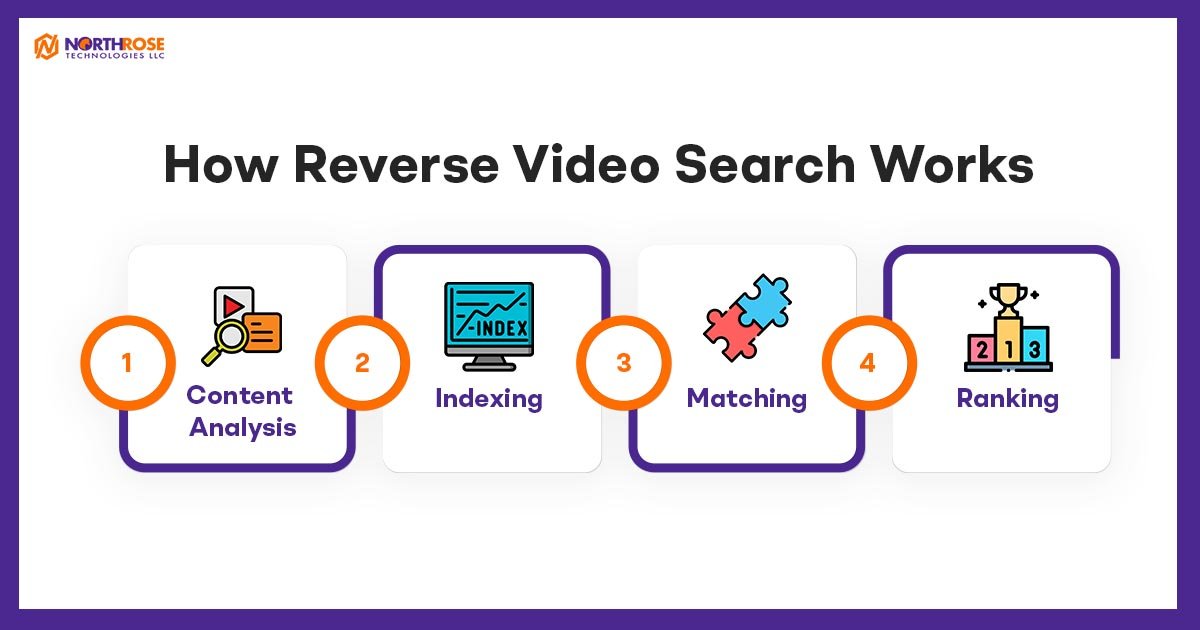The capacity to search for photos and videos has become essential to our everyday lives at a time when visuals predominate in our online encounters.
Visual search technology is transforming the way we use the internet, from locating things we want to buy to finding inspiration for creative undertakings.
But just as technology develops, so do our demands. Reverse video search comes in as a state-of-the-art instrument that elevates visual exploration to a whole new plane.
The Evolution of Visual Search
Since its inception, visual search technology has advanced significantly. Traditional text-based search engines like Google were the first, allowing users to enter keywords and get pertinent content. These search engines performed well on textual items, but they had trouble deciphering and analyzing photos and videos.
The advent of picture search engines such as Google Images marked the first significant advancement in the field of visual search. Through the use of these platforms, users could submit or enter an image and retrieve visually comparable web results. Even though this was a big improvement, users still needed to have an initial image before they could begin searching.
Businesses started creating reverse image search engines as technology developed further, allowing users to locate the original or related photos based on an existing image. This invention created a plethora of opportunities, ranging from the identification of locations and items to the tracking down of the source of viral photos.
Now that reverse search by video has become available, the field of visual discovery has grown much more. The way we interact with video content online is being revolutionized by this technology, which enables users to search for videos based on visual elements.
How Reverse Video Search Works
At its core, reverse video search operates on the same principles as reverse image search but with one key difference – it analyzes video content instead of static images.

So, how does it work?
1) Content Analysis:
Reverse video search algorithms analyze the visual and audio content of a video to extract key features such as colors, shapes, objects, and even spoken words.
2) Indexing:
Once the content is analyzed, it is indexed into a database along with metadata such as title, description, and tags. This indexing process makes the video searchable based on its visual and auditory elements.
3) Matching:
When a user performs reverse search by video, the algorithm compares the features of the query video with those in the database to find visually similar or related videos.
4) Ranking:
Finally, the search results are ranked based on their relevance to the query video, taking into account factors such as visual similarity, metadata, and user engagement metrics.
By leveraging advanced machine learning and computer vision techniques, reverse video search engines can efficiently process vast amounts of video data and deliver accurate search results in real time.
Applications of Reverse Video Search
The applications of reverse video search are diverse and far-reaching, spanning various industries and use cases.
Here are some of the most notable applications:
- Content Creation:
Reverse video search is a useful tool for content creators to research competitors, get inspiration, and learn about popular topics. Creators can obtain valuable insights about the preferences of their audience and adjust their content strategy by examining the most watched videos in their area.
- E-commerce:
The way we shop online is being revolutionized by reverse video search. E-commerce platforms can improve the entire shopping experience and provide more relevant product recommendations by enabling consumers to search for products based on visual signals inside videos.
Reverse search by video, for instance, might be used by a person viewing a cosmetics demonstration to locate and buy the products that are highlighted straight from the video.
- Media Monitoring:
In the age of social media and user-generated content, monitoring brand mentions and tracking the spread of viral videos is essential for businesses and marketers. Reverse video search enables them to identify and analyze videos related to their brand or industry, allowing for timely responses to emerging trends and crises.
- Law Enforcement and Security:
The use of reverse video search affects security and law enforcement organizations significantly. Authorities can more effectively identify suspects, follow criminal behavior, and obtain evidence by examining surveillance footage and internet recordings. Additionally, by confirming the legitimacy of video content, reverse video searches can help in the containment of misinformation and fake news.
- Education and Research:
In the field of education, reverse search by video can be used to enhance learning experiences and facilitate knowledge discovery. Students and researchers can use this technology to find educational videos, lectures, and tutorials on specific topics, supplementing their studies and expanding their understanding of complex concepts.
Challenges and Limitations
While reverse video search offers a multitude of benefits, it is not without its challenges and limitations. Some of the key challenges include:
- The accuracy of reverse video search results depends on the quality of the algorithms and the richness of the video data. Inaccurate content analysis or insufficient metadata can lead to irrelevant or misleading search results.
- As the volume of online video content continues to grow exponentially, scalability becomes a critical concern for reverse video search engines. Processing and indexing large amounts of video data in real-time requires robust infrastructure and computational resources.
- Reverse video search raises significant privacy concerns, particularly regarding the tracking and analysis of personal or sensitive content. Users may be hesitant to upload or search for videos if they are concerned about their privacy and data security.
- Videos come in various formats, resolutions, and aspect ratios, making it challenging to develop algorithms that can accurately analyze and compare different types of video content. Variations in lighting conditions, camera angles, and editing styles further complicate the process.
- Copyright issues are brought up by reverse video searches, especially in relation to identifying and crediting original producers. To prevent legal problems and claims of infringement, it is imperative to uphold fair usage and protect intellectual property rights.
Despite these challenges, ongoing research and advancements in technology are gradually addressing these limitations, paving the way for more robust and scalable reverse video search solutions.
In conclusion, reverse video search represents a paradigm shift in how we discover, explore, and interact with video content online. By harnessing the power of advanced algorithms and machine learning techniques, reverse video search engines are unlocking new possibilities for visual discovery across a wide range of industries and use cases.
As technology continues to evolve, we can expect reverse search by video to play an increasingly integral role in shaping the future of the digital landscape.
From content creation and e-commerce to law enforcement and education, reverse video search has diverse applications across various industries and use cases.
Despite these challenges, the future of reverse video search looks promising, with advancements in technology paving the way for more intelligent, personalized, and real-time search experiences.
As we continue to embrace the power of visual discovery, reverse video search will undoubtedly play a central role in shaping the future of online content consumption and interaction.
Connect with the experts at North Rose Technologies to learn more about the trends in digital marketing.




